#alstom
Text
SNCF and Astom are working on TGV-M, the latest french high-speed train iteration, and just. Look at her
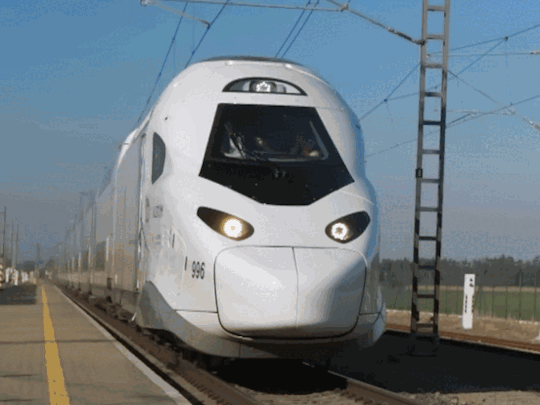
My gorgeous and menacing 400T baby <3
#train#sncf#high-speed train#alstom#railway#innovation#tgv-m#france#french#pas mal non ? c'est français#gif#train gif#locomotive#pareidolia
122 notes
·
View notes
Text

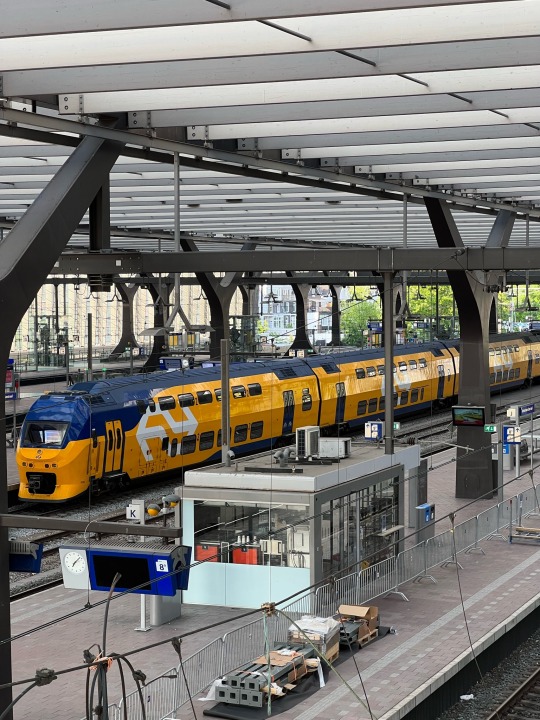
Battle of the low countries’ m-class double deckers! Which one wins your heart?
@nmbs-sncb-official
#trains#nmbs#sncb#ns#double deckers#Alstom#bombardier#Belgium#the Netherlands#public transport#Low Countries
86 notes
·
View notes
Text

Qu'est-ce que vous croyez? Bien sûr que ces choses sont difficiles à prouver. Bien sûr que "peut-être le parquet pourra établir que"... Dans 100 ans peut-être. Idem pour le sarce de John Michael. J'avais tout dit sur un certain Sean du même nom, coïncidence, dans Sociologie du hardeur, et ce type a d'ailleurs fini sa carrière dans le transporn 1 an après la publication, tous les hashtags Twitter en témoignaient. C'est ainsi, la vie nous a fadé... Mais il faut à nos passifs mégotteurs du mainstream des preuves, toujours plus de "décodage" décrypté, débunké, des tableaux noirs remplis à la craie de démonstrations par certitudes rationnelles... Et une fois cela fait ils baillent. "C'est ennuyeux vos histoires, là..." On sait combien la pente "certitude rationnelle" a porté chance à la Civilisation depuis Descartes. Mais on en veut encore. La preuve, la démocratie, la trans-pa-rence.
La personne a une silhouette d'homme, une entrejambe d'homme, une tête d'homme, mais ce n'est pas assez prouvé encore. Mar-a-Lago? "Mais ça prouve rien". La dame est une femme à barbe? "Et alors? Elle a le droit". Cent photos l'accablent. "Quoi, tu es transphobe?". Jacassages de crabes dans un panier de rivalité mimétique alors que l'objectif est de se libérer du joug de ces parasites accrochés sur la France. Pendant ce temps eux poursuivent leurs objectifs. Invasions, avortements, euthanasie, enfants sous influence... Et le bon mainstream parle encore rationnel, preuve mathématique, langage robot. Bon...
« Notre peuple a le droit de se dire quitte envers les Démocraties. De 1914 à 1918, il leur a sacrifié deux millions de morts et les trois quarts de la fortune nationale. En 1939, elles lui ont demandé le sacrifice total. »
Georges Bernanos, La France contre les robots (1947)
15 notes
·
View notes
Note
tell me about french train headlights
They're all the same! Or at least they were, from the mid-1950s to about the early 1990s. They all look like this:
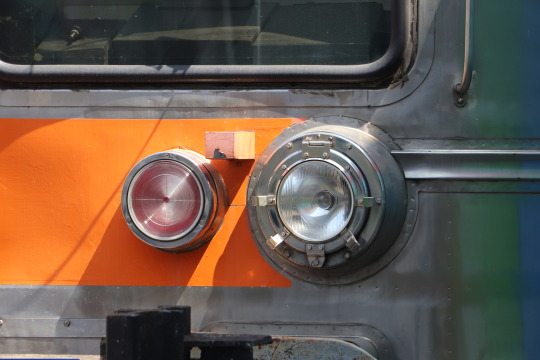
Okay, some context for why I find this interesting. Suppose you see a picture of a train, especially one made in the second half of the 20th century, and you want to know where the train is from. The key trick to telling this at a glance is having a bit of autism, but more specifically, the headlights.
In Europe, all major and many minor countries used to have their own government-owned railroad and their own train-building industry, which would build trains to the specifications of their railroad company. There has always been some exporting going on, but for the most part, the trains you'd find in Germany, France, Switzerland, Austria and so on would be all completely different. This has changed drastically over the past 20ish years.
One thing about this old model is that railroad companies would standardise certain parts within their fleets, especially small parts that need servicing and replacing every now and then. It saves on how many different types of spare parts you need to have.
Headlights are the most notable among these by far: Every train needs to have some of them. All trains have basically the same requirements for their headlights, no matter how fast or slow or whatever they are. Before LEDs, you needed to service the headlights regularly to replace the light bulbs, and as glass parts at the front of a fast moving vehicle, they can get damaged, so spare parts logistics are an issue. And most importantly, we as railfans can easily see them. So you get something like this:
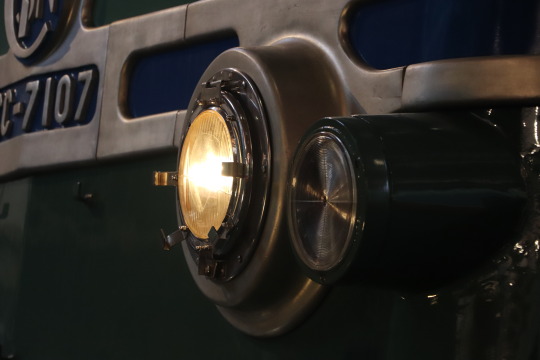


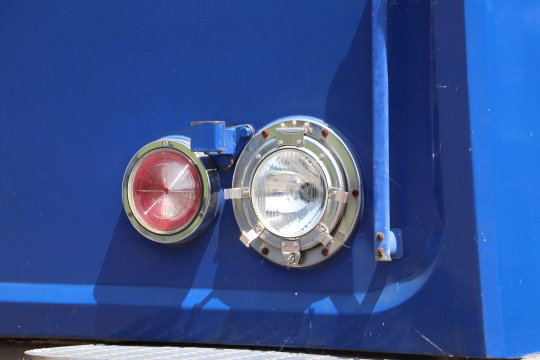
As a result, basically all railroad companies in post-war Europe standardised their head- and taillights for all or most of their trains. And all of them had completely different ideas. Fundamentally, all of them agreed that you need white headlights and red taillights, and since modern trains are easily reversible, you put both of them next to each other.
But do you make the white and red lights the same size (West Germany, Netherlands) or different sizes (Austria, East Germany)? Are they separate things, or do you combine them into one assembly (UK, Switzerland)? Do you make them anything approaching normal sized or gigantic (Poland)? Maybe I'll do an overview post over these later, but I don't have enough pictures in my library right now and I'd have to scour Wikipedia for them later.
The French headlight design shown here is in many ways just one of many, but also interesting in its own right: The actual lenses for red and white are the same size, but the white headlight gets this huge lens assembly that makes it look much more prominent. You can clearly see that different French designers had very different ideas about whether you the center-lines (most of them), or the bottom of the lens assembly. Why is the headlight lens so big, and what are the metal was around the bottom half of the circle? I have no clue. My guess is to put some coloured glass panes in, but I have no idea why you'd need that. Also, note that the red taillight classically has a fresnel lens, that's unique as far as I can tell.
I've taken all these pictures in the Cité du Train, the big central French railroad museum in Mulhouse. (That's why I was posting about traveling to Basel early this weekend. Mulhouse is actually really close to Basel, and going via Switzerland is the most practical—and most scenic—route for me) The oldest locomotive I could find with these headlights was CC-7107:

During high speed trails in the early 1950s, this locomotive reached a speed of 326 km/h (203 mph). That made it only second best behind the other locomotive at the trials, BB-9004:

This one reached 331 km/h (206 mph), a world record that would not be beaten for a long time. The difference was nothing to do with technical performance. Instead, both locomotives melted their pantograph, the part on top that touches the overhead line to get power, at around 320 km/h (200 mph). BB-9004 had a second one that it could lift up to continue accelerating, while CC-7107 only had the one. For a long time, SNCF pretended that both locomotives had reached 331 km/h, to protect the reputation of both manufacturers.
What's notable for our purposes is that BB-9004 has different headlights. As far as I can tell, these seem to be an earlier standard design, also found e.g. on the CC-65001 diesel locomotive:
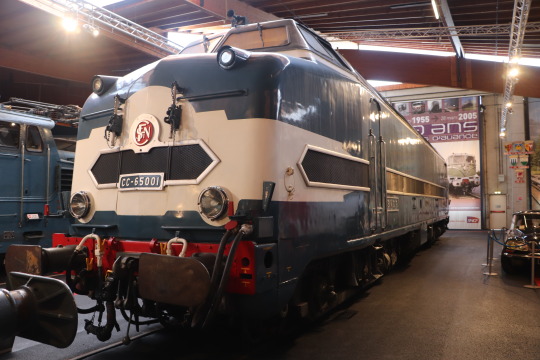
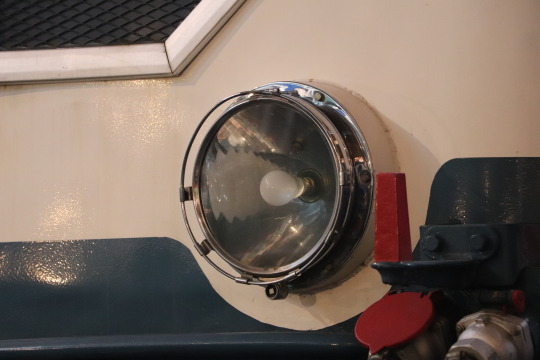
And even on steam locomotives, like this class 141 R:

So CC-7107 lost on the high speed world record, but it was the way of the future when it came to headlights. These headlights then started cropping up everywhere. From the detail pictures I've shown you above, we have e.g. Le Petit Gris (the small grey one, an EMU for suburban services in Paris):

A CC-6500, dressed up with a nameplate for the express train it was hauling. Fun fact: One locomotive of this type (not this one) was used in the US for a while, as Amtrak was trying out new electric locomotives to use. They weren't happy with it and bought a Swedish one instead, mostly because this locomotive's suspension did not work well with the American track quality.
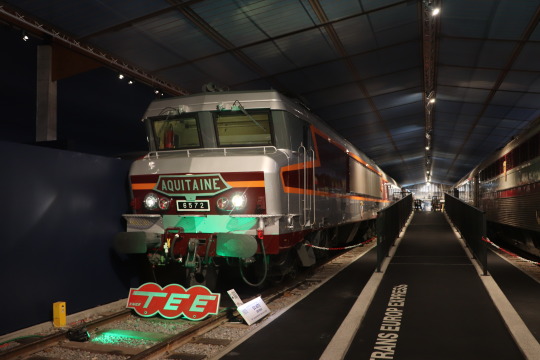
A Z 2200, a diesel railcar for rural lines designed to be cheap first, second and third.

A BB-26000, which feels altogether way to new to be in this museum.
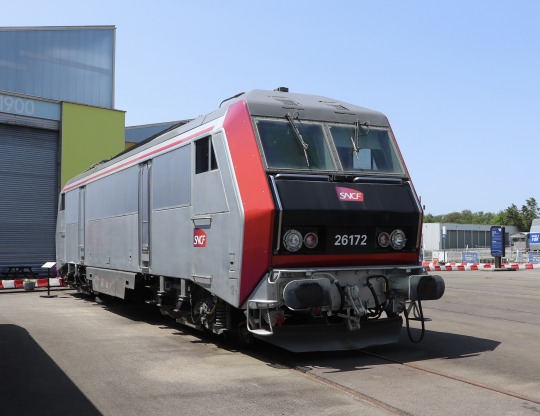
It's from the 1980s, so I guess the first are reaching retirement age. But at the same time: The train I took from Basel to Mulhouse was still pulled by one of these BB-26000.
Other favourites include the BB-25600 with its rare diagonal light arrangement:
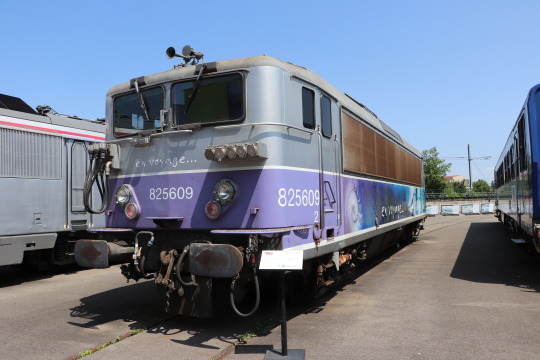
Or the really terribly lit gas turbine train RTG, which puts the headlight on stalks:
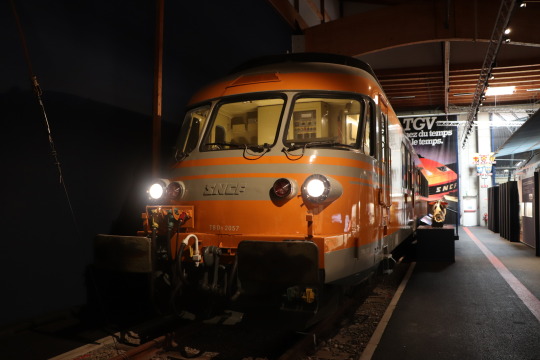
Fun fact: Amtrak did end up buying a few these. They didn't use the same white headlights (although they did use the same stalks), but they did use the same fresnel lens red taillights.
And the headlights went all the way up to the top. To the TGV. Only these headlights aren't very aerodynamic, so for their high-speed train, SNCF decided to cover them up.
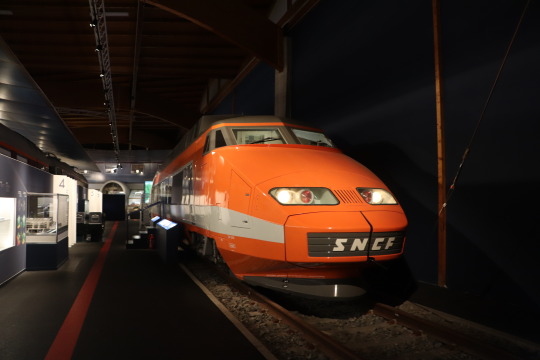
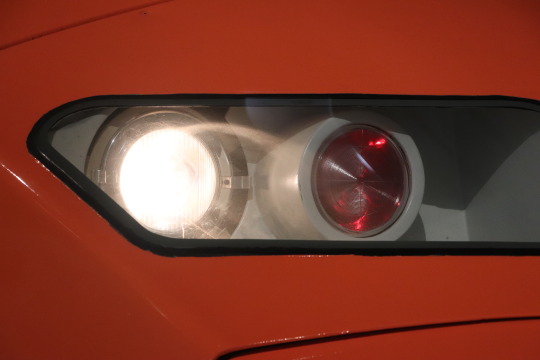
As far as I can tell, SNCF used these headlights in the TGVs up to the Réseau series, including the Eurostar. That meant that they're also found, though behind faded glass, on the TGV Atlantique 325 in the outdoor area. Number 325 is notable because it was involved in another high speed trail, and reached 515.3 km/h (320.3 mph) on May 18th, 1990.

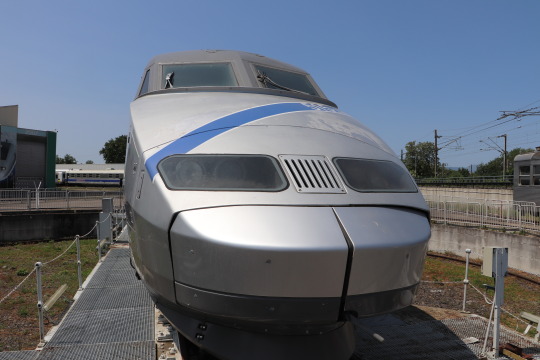

That was a world record, of course; in fact only the French ever exceeded 500 km/h on conventional railroads. So these headlights did get their world record after all. They didn't get to keep it for long, though. In 2007, a newer TGV reached 574.8 km/h (357.2 mph). That one is still in service, though, and it was equipped with newer LED headlights. I think it's highly unlikely that this record will be broken anytime soon, but if anyone does, I wouldn't be surprised if it were the French again, they like that sort of stuff.
Some final odds an ends with the headlights, though: Here's CC-40101, which isn't actually relevant, I just like the way it looks.

Designed for service in France, Belgium, the Netherlands and Germany, with four different voltages and four different train control systems, and that with mid-1960s technology. It wasn't quite as successful as hoped, and in service it only ever reached Belgium, but still, look at that design. The front is supposed to evoke an athlete, a sprinter about to start, but this type of design has instead become known as "Nez cassé", broken nose.
BB-9291 shows a rare early version without red tail lights at all. Someone thought they were saving money.
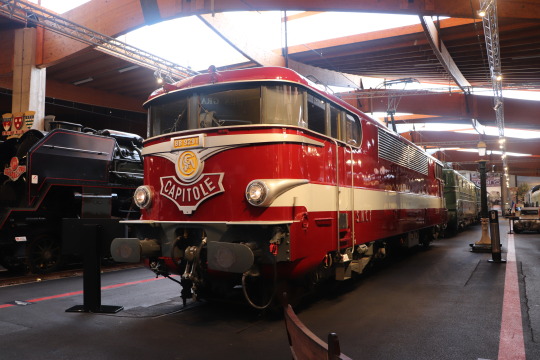
This small work train has a free-standing version of the headlight, which shows us how deep it really is. Apparently, the French headlight is actually not that deep, and isn't that a nice summary for this post?
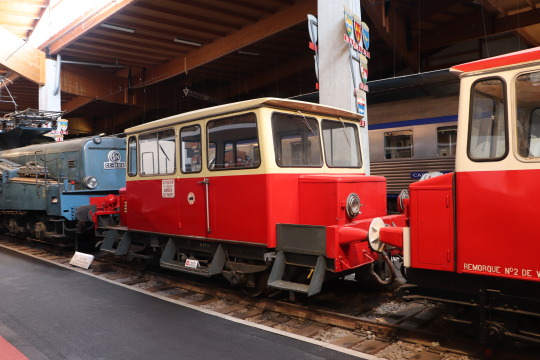
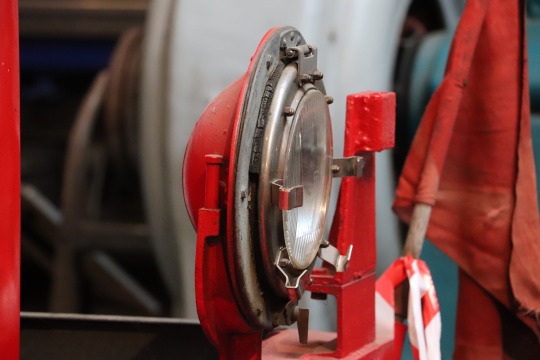
And a personal favourite of mine, I even bought a T-Shirt with it on it, the Z 600:
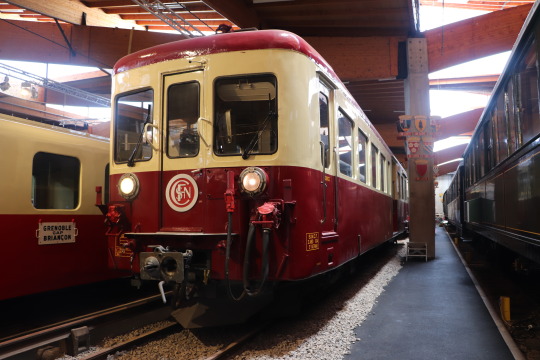
The design, in particular the side windows (recessed instead of flush, no outside visible gasket) says Swiss, the headlight and SNCF logo says French, it's narrow gauge and it has a third rail to provide power. Just all around a weird little train, for the weird little line known as the Mont-Blanc Express from France via Switzerland to the bottom of the Mont-Blanc mountain. The train was built in Switzerland, experts of building small trains for mountains, but for the French part of that rail line, so it got French headlights.
Headlights with exporting is a fun topic in its own right. Do you keep the headlights from the country of origin, or demand your own? You will find both approaches. Both Portugal and the Netherlands bought very similar electric locomotives from France. Portugal has French headlights, the Netherlands insisted on (less interesting) dutch ones.
These days, of course, you will still find these headlights, but they're getting rarer. They stopped being used in new trains around the mid-1990s. What's more, the ones you do find, like on this MI-84 in Paris, probably don't have the fresnel lens taillight anymore. Instead, those were replaced with LEDs.

LED lights for railroads make a lot of sense. They last forever and require less power. And since most railroads have standardised their head- and taillights, you just need to design one replacement light for most of France, and then keep building that one until SNCF stops giving you money.
(Since we're showing a picture from Paris, a quick note: These headlights were never used on passenger-carrying trains for the Paris metro. However, some work trains do have them.)
These days, standard headlights are completely gone. LEDs don't need a lot of replacing, and they give you much more freedom to do things like shapes and patterns and designs. Also, we don't have the "one country, one railroad, one rail industry" pattern anymore. Instead now we have multi-national rail conglomerates. Alstom is technically French, but arguably just as much German, ever since they bought Bombardier's rail division, nominally Canadian. Stadler is Swiss, except for the stuff they build in Germany or Poland or Belarus or Hungary or…, and some of their most interesting products right now are built and designed in Spain.
The end result of that is this:
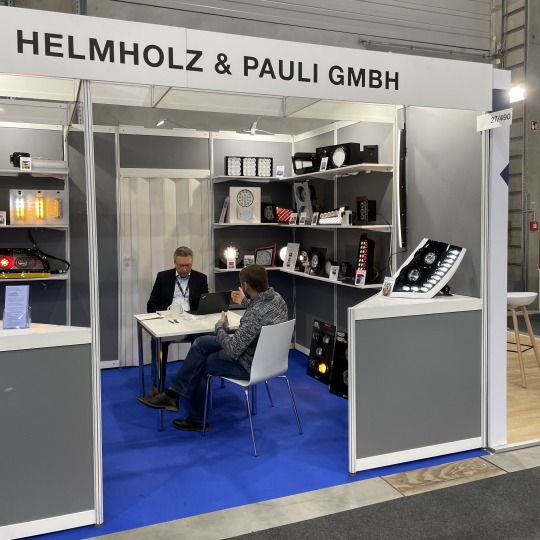
That's a company I saw at a trade fair (Innotrans, Berlin, 2022) that makes LED train headlights, and specifically they make… all of them? Okay, I'm exaggerating, but this is a great picture to drive a European rail fan insane as they try to assign the different headlights to different trains. You get Stuttgart trams, German (and Turkish) high speed trains, lots and lots of Swiss stuff. Nothing specifically French that I could tell, but at least the German high speed train regularly travels to Paris.
The standard headlights, or their LED variants, were still in use for work trains until fairly recently. There are not that many companies that make rail grinders or ballast tampers, and those tend to just use whatever headlight their customer tells them to. But these days they go for shaped LED headlights as well, because they're just better, and because thanks to European standardisation, a headlight approved in one country can (generally) be used in all European countries.
(All pictures © me, feel free to use them under CC-BY-SA 3.0 DE if you want)
55 notes
·
View notes
Text
Dzień Otwarty Zajezdni Będzin
2023.09.23
Zdjęcia okazjonalne, wykonane na dniach otwartych Zajezdni Tramwajowej (Rejonu Nr. 1 Tramwajów Śląskich) w Będzinie.

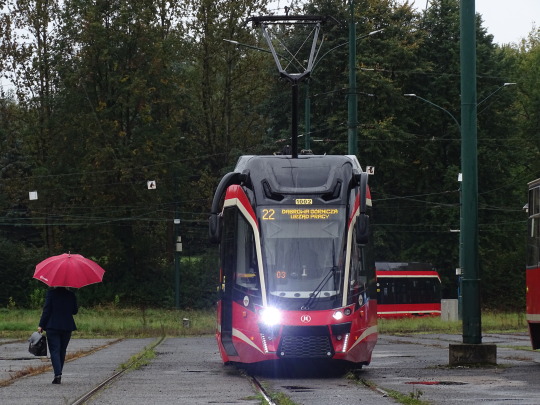
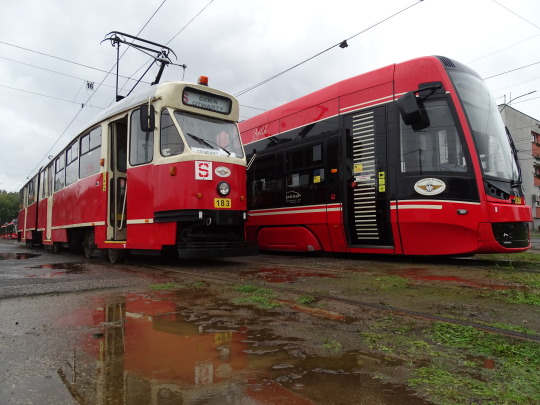

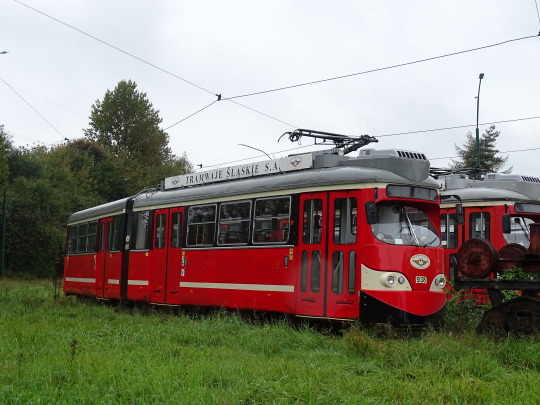
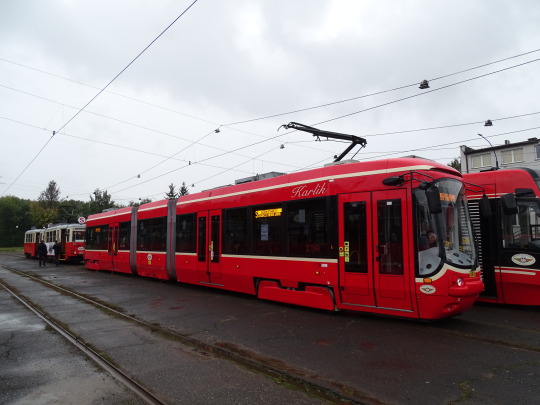
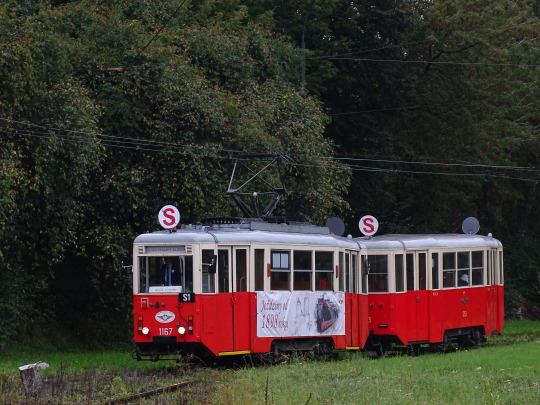
Na zdjęciach można zobaczyć tramwaje, które kursowały tego dnia na liniach specjalnych, są to:
Tramwaj typu 4N+4ND #1167+1263
Tramwaj typu 102Na #183
Alstom Konstal Cidatis 100 116Ndm #803
Tramwaje, które nie jeżdżą już w ruchu liniowym:
SGP Lohner E1 #938 i #932
Oraz pozostałe tramwaje, które wyjeżdżały na linie regularne, bądź stacjonowały w zajezdni:
Moderus Beta MF10AC #1002, poc. 2203, na linii 22
Moderus Beta MF10AC #1003, poc. 2202, na linii 22
Pesa 2012N #847
Moderus Alfa HF11AC #771, poc. 2705, na linii 27
#Śląsk#Silesia#Zagłębie#Będzin#Tramwaje#Trams#Tramwaje Śląskie#Konstal#4N#1164#4ND#1263#102Na#183#Alstom#Citadis#116Ndm#803#SGP#Lohner#E1#938#932#Moderus#Beta#MF10AC#1002#1003#Alfa#HF11AC
8 notes
·
View notes
Text
France: Alstom to Extend Le Mans Citadis Trams
Alstom has been awarded a contract by Le Mans Métropole to extend the length of 34 Citadis trams in Le Mans, France.
A 32-metre Citadis tram, which will be extended to 44 metres at the end of this project
© Alstom
Under this contract, which is valued at 57 million EUR, Alstom will extend the city’s existing trams from 32 to 44 metres long. This work is set to increase the transport capacity of…

View On WordPress
3 notes
·
View notes
Text
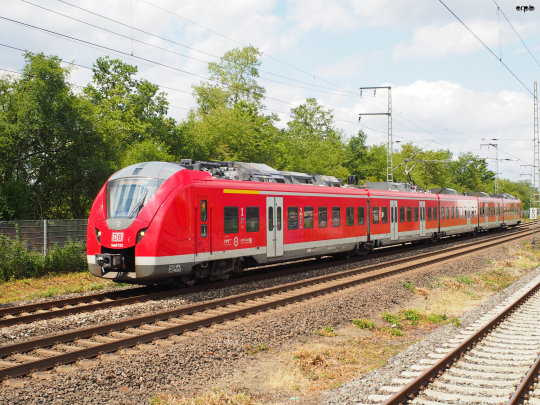
Elektro-Triebzug 1440 722 Alstom Coradia Continental
Electric multiple unit 1440 722 Alstom Coradia Continental
#railwayblog.de#1440 722#BR 1440#Alstom Coradia Continental#Alstom#stoomtrein#Steam train#locomotora#locomotive#lokomotywa#Railway Museums & Depots#Railway#鉄道#локомотив#Triebzug#Elektro-Triebzug
3 notes
·
View notes
Photo
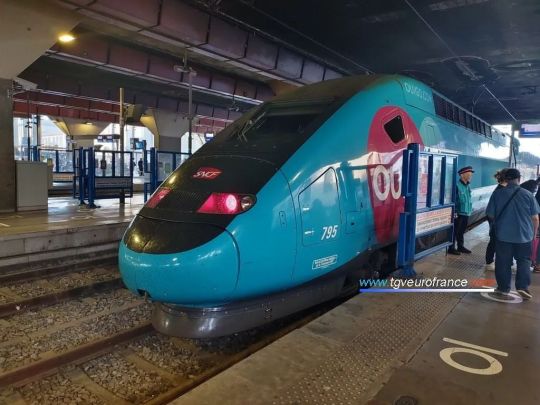
Une rame Ouigo (la TGV Dasye 795 SNCF) en gare de Marseille Saint-Charles le 19 septembre 2022. http://www.tgveurofrance.com #tgv #tgvduplex #ouigo #sncf #marseille #trainspotting #instatrain #trainstagram #railfans #railfan #railways #railways_of_our_world #railfans_of_instagram #highspeed #highspeedtrain #alstom @alstom @groupesncf @gares_connexions @ouigo @villemarseille @departement13 (à Gare de Marseille St-Charles) https://www.instagram.com/p/Cpjuqfjobvk/?igshid=NGJjMDIxMWI=
#tgv#tgvduplex#ouigo#sncf#marseille#trainspotting#instatrain#trainstagram#railfans#railfan#railways#railways_of_our_world#railfans_of_instagram#highspeed#highspeedtrain#alstom
2 notes
·
View notes
Text
The 1st fully hydrogen-powered passenger train service is now up and running in Germany

Coradia iLint trains built by Alstom are running on the line in Lower Saxony, Germany. The only emissions are steam and condensed water, and Alstom notes that the train operates with a low level of noise.
Five of the trains started running this week. Another nine will be added in the coming months to replace 15 diesel trains on the regional route. Alstom says the Coradia iLint has a range of 1,000 kilometers, meaning that it can run all day on the line using a single tank of hydrogen. A hydrogen filling station has been set up on the route between Cuxhaven, Bremerhaven, Bremervörde and Buxtehude.
3 notes
·
View notes
Text

train stations (with trains in them)
1 note
·
View note
Video
youtube
High speed train sketch, ASMR and material how to's
On my channel design | create | inspire you will find more of these how to video’s and ASMR speedsketch design drawings showing you how to hand draw design sketches and how to communicate your ideas.
Your gateway to a world where alcohol markers, pastels, and pencils converge on a blank sheet of paper, turning ideas into tangible wonders with the aid of cutting-edge digital techniques.
Immerse yourself in the artistic realm of industrial design as we sketch with VR goggles, craft concept art on digital drawing screens, sculpt in 3D-realistic environments, and bring drawings to life through 3D printing and prototyping.
Embark on a sensory journey where the soothing whispers of ASMR blend with the excitement of design innovation. Let’s embark on a creative voyage together, where every stroke and click resonates with inspiration.
Find your peace in designs coming to life before your eyes, accompanied by the ASMR sounds of the creative process, and learn new techniques through our tutorial videos. Design | Create | Inspire, for those who love design!
Powered by ABID | Alexander Bannink Industrial Design.
#youtube#industrial design#product design#high speed rail#high speed train#design#sketch#rendering#copic markers#copic art#copicdrawing#markers#derwent#pastel chalk#asmr video#concept art#concept#future of mobility#mobility design#automotive design#hydrogen train#hydrogen#pod transport#transportation design#pantone#luxury transport#bombardier#alstom#siemens#hitachirail
1 note
·
View note
Text
L'affaire Alstom et le "pacte de corruption"
Résumé de l'affaire Alstom et du "pacte de corruption" en appliquant les 2 principes d'enquête criminelle: 1/ À qui profite le crime? 2/ D'où vient l'argent et où va-t-il ?

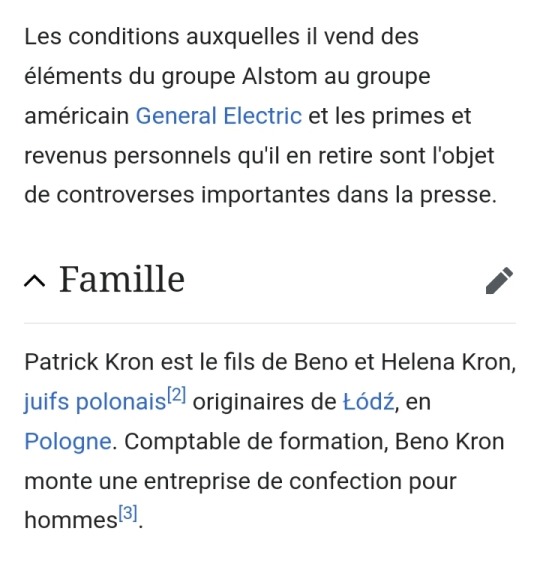

6 notes
·
View notes
Text

SMRT Alstom MOVIA R151 parking in the train shed
R151 unit 837-838 parked at Tuas West Depot (TWD). Resting inside the railway shed.
DeviantArt Post
IG Post
#smrttrains#smrt#train#train drawing#train art#art#singapore#singaporetrain#singaporetrains#mrt#alstom#alstommovia#r151#alstom movia r151
0 notes
Text
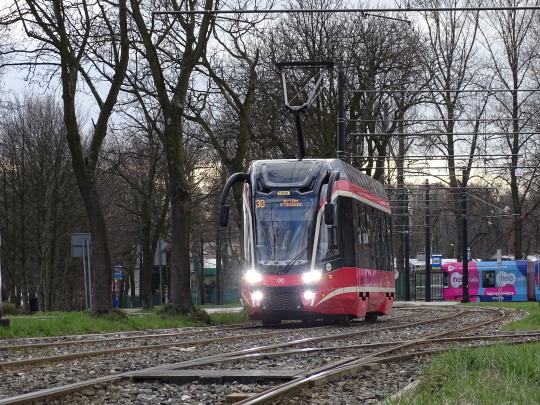



Zabrze Biskupice Pętla
2023.04.04
Z powodu zmiany organizacji ruchu w Zabrzu, przywrócona do ruchu została linia 30 na trasie Bytom pl. Sikorskiego - Zabrze Biskupice Pętla, a także została zmieniona trasa linii 3 Zabrze Makoszowy - Zabrze Biskupice Pętla.
🚊 Moderus Beta MF10AC #1005, linia 30
🚊 Alstom Konstal Citadis 100 116Ndm #815, poc. 305, linia 3
#Śląsk#Silesia#Zabrze#Biskupice#Pętla#Loop#Tramwaje#Trams#Moderus#Beta#MF10AC#1005#30#Alstom#Konstal#Citadis100#116Ndm#3
2 notes
·
View notes
